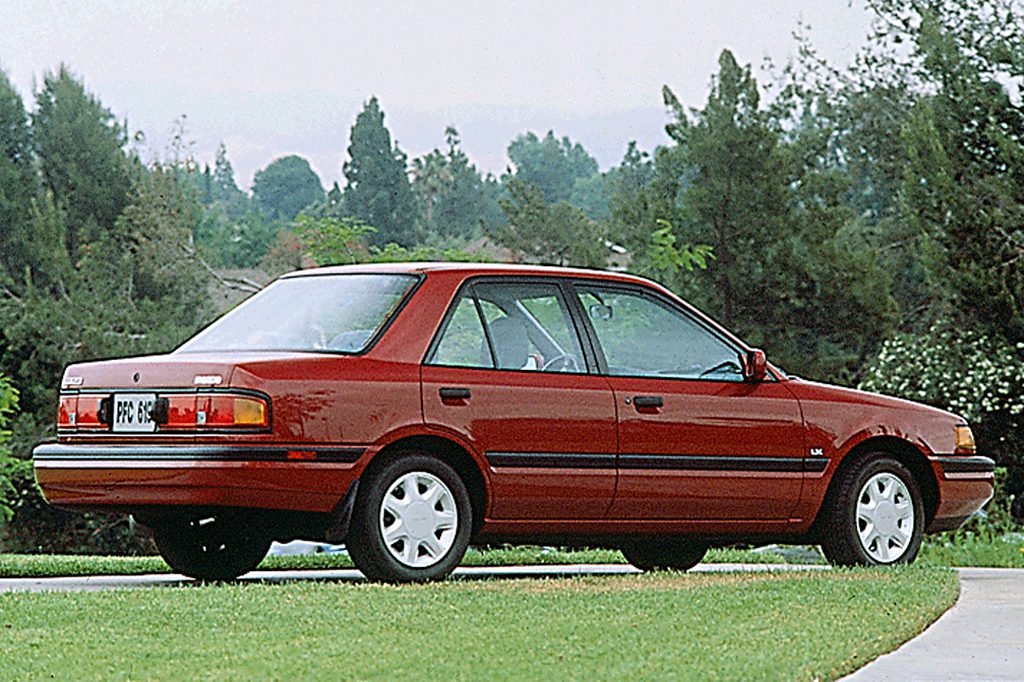| Compact car; Built in Japan |
|
|
| Good condition price range: $1,000 – $1,400* |

1992 Mazda Protege

1990 Mazda Protege

1991 Mazda Protege AWD

1990 Mazda Protege interior

1990 Mazda Protege engine
| Pros: |
|
| Cons: |
|
Generally, the Proteges sold for less than comparable models from Toyota, Honda, and Nissan. Therefore consumers can expect to find some real bargains when shopping for a preowned Protege.
Overview
The redesign of Mazda’s front-drive subcompact produced two models in 1990: a 2-door hatchback called 323, plus a larger, more expensive 4-door-sedan called Protege. It rode on a 98.4-inch wheelbase, nearly four inches longer than the old 323 sedan. The base Protege SE came with a 16-valve, 103-horsepower 1.8-liter 4-cylinder engine. Protege LX had a twin-cam version of the same engine that delivered 125 horsepower. All models came with either a 5-speed manual or 4-speed automatic gearbox. A 4-wheel-drive Protege appeared briefly in 1990, but was quickly discontinued halfway through the 1991 model year.
Yearly Updates
| 1991 Protege The Protege sedan gets only minor standard equipment changes for 1991. In addition, the base version switches names from SE to DX. |
| 1992 Protege New taillight lenses are the only change made to the 1992 Mazda Protege. |
| 1993 Protege Mazda adds its new corporate logo to the nose of the 1993 Protege and makes some mild revisions in certain equipment packages. |
| 1994 Protege A minor facelift for the Protege sedan is the only change for ’94. Added to the front of the compact sedan is a new front fascia, grille, hood, and new headlamps. |
